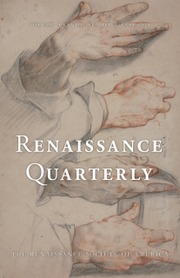“A series of happy accidents” (xi) has delivered the Greek editio princeps of George Amiroutzes’s The Philosopher, or On Faith, lost since the sixteenth century. Scholars have much to be excited about in John Monfasani’s edition and translation, to which are appended a general introduction and two shorter items: a letter from Amiroutzes to Bessarion in 1461, and Johannes Werner’s 1514 preface to his De his quae geographiae adesse debent (the Greek original is missing). The outcome is a much-refined intellectual portrait of one of Byzantium’s preeminent philosophers, accompanied by a fascinating reflection on the epistemological conditions of and limits to interfaith dialogue—issues of relevance today.
We know little about Amiroutzes’s early life, education, or philosophical practices. Born around 1400 in Trebizond, we might suppose he was trained in Constantinople, where he would have studied alongside the era’s luminaries. However he was trained, we cannot question his stature: he was chosen, with Geroge Gemistus Pletho and Geroge Scholarius, to represent Greece at the Council of Ferrara-Florence. His sobriquet (the Philosopher) is attested in Latin, Greek, and Turkish; the reference underscored Amiroutzes’s celebrity. Of his philosophy, little remains: a spiritual supplication, an essay refuting common intellect, and fifteen treatises from the same manuscript as our text, edited by Monfasani in 2011. The Philosopher therefore provides critical evidence for Amiroutzes’s habits of mind.
A fictional representation of theological discussions between Amiroutzes and the Ottoman Sultan Mehmed II, The Philosopher is prima facie catechism staged as dialogue. Mehmed questions or poses a challenge; George supplies the doctrinally correct response. Mehmed forbids any mention of Islam, consigning Amiroutzes to strict apology. Triviality is forestalled by the sultan’s insistence on “common notions”: arguments (often derived from Aristotle) to which all parties can assent despite differing beliefs. George is at his most interesting when probing the limits of this epistemic constraint, such as his assertion that God’s uniqueness makes “common notions” a poor tool for theological disputation—an argument as liable to inhibit toleration as the search for shared standards is to enable it.
The Philosopher was not, however, entirely unknown. Editions of a partial manuscript in Latin were published in 1987 (Argyriou & Lagarrigue) and 2000 (de la Cruz Palma). While reviewing the latter, Monfasani remembered three complete exemplars in the Vatican Library. In 2004, after sending to press the supplementary missing text, he recognized its beginning in a Greek incipit from a sixteenth-century miscellany in Toledo, Cabildo 96-37 (known as T). Composed in two hands (a copyist and an annotator dubbed T1), it is a unique witness; the source for the Latin translation seems to derive from a different family.
Combining insights from these copies, Monfasani provides a critical edition with diplomatic tendencies: he is faithful to orthography, accentuation, and word division, excepting for errors, inconsistencies, and omissions. His editorial choices—arranging the text with de la Cruz Palma’s Roman numerals, providing T’s foliation, adding paragraph and phrase numbers—evince a publication meant to stimulate further study. While I have been unable to access a copy of T to evaluate the transcription, the text and apparatus are coherent and without noticeable error; they are supported by a helpful introduction and notes—e.g., for Amiroutzes’s citations. Monfasani’s rendering is clear, consistent, and accurate, making complex arguments approachable for a wide range of audiences.
Subject experts will find much to appreciate in this editio princeps, including new topics to investigate in detail, like Aquinas’s influence on Amiroutzes. The text’s Greek diction, form, and style suggest still other topics, such as its fondness for the adjective ἄτοπος and its reflections on the propriety of writing after Ottoman conquest. Nonspecialists will be intrigued by resonances with John Rawls and echoes of thirteenth-century debates about double truth. I can think of no better text to illustrate the fifteenth-century Mediterranean’s intricate and intercultural intellectual ecosystem for students, undergraduate and graduate. Classes or modules interested in early modern interfaith discourse or religious conflict, especially those with an eye toward intellectual history, would benefit from its inclusion as a source.



